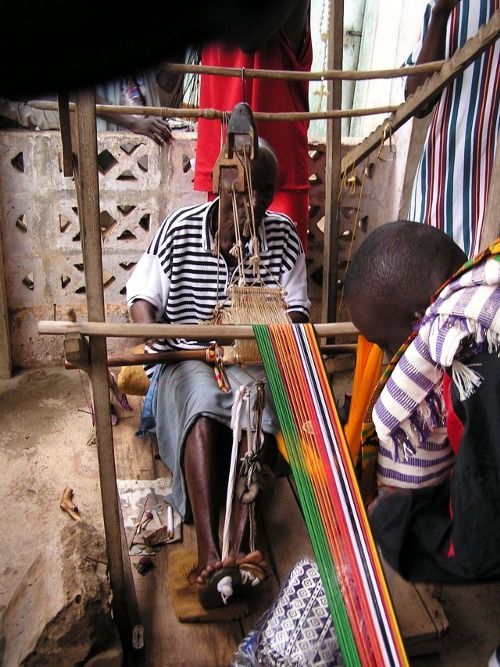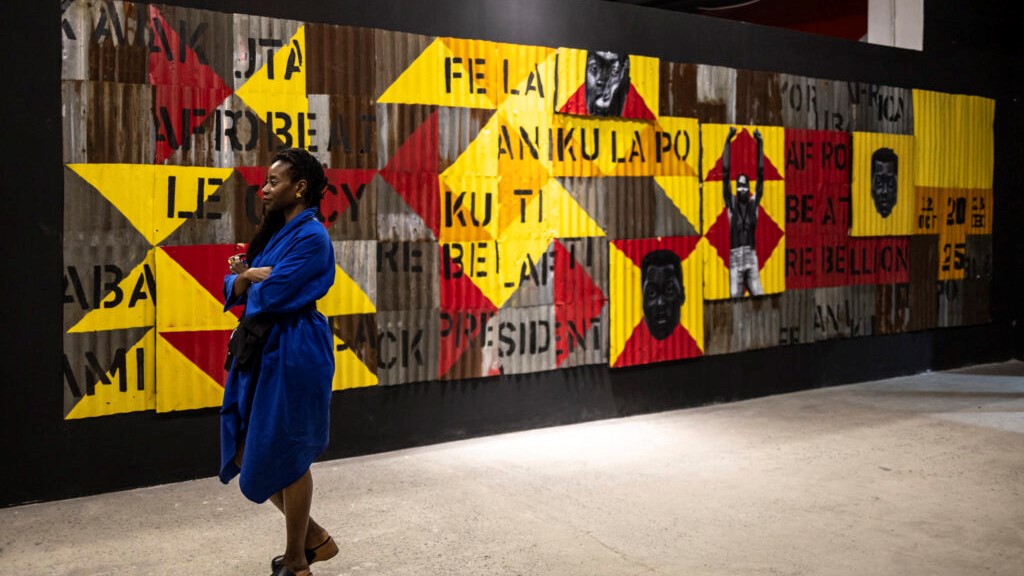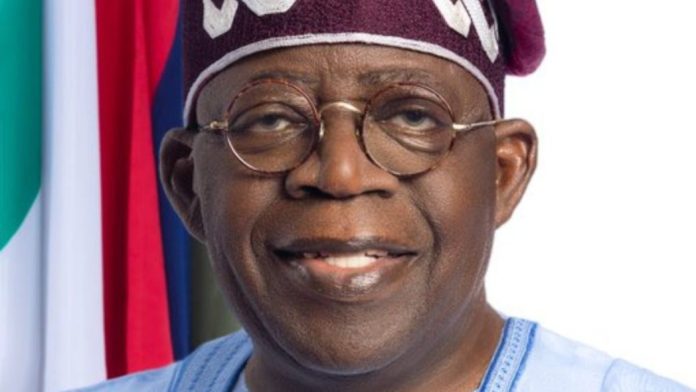Textiles, Trade, and Transformation: How African Fabric Became a Global Business Icon
(1).jpeg)
Africa’s textile heritage weaves together ancient trade, cultural symbolism, and modern entrepreneurial ambition. From the royal Kente of Ghana to vibrant Ankara prints loved globally today, African fabrics carry stories of identity, commerce, and resilience. Once traded along coastal routes and exchanged as luxury goods, these textiles have evolved into a dynamic fashion ecosystem. This article explores how traditional textiles became a powerful business icon, empowering creators across Africa while embedding cultural legacies into every thread.
Ancient Threads, Modern Commerce
Kente cloth, widely recognized as Ghana’s signature textile, traces its origins to the 11th century weaving traditions of Akan and Ewe communities. By the early 1700s, the Asante Empire adopted it as royal regalia, with apprentices from villages like Bonwire and Adanwomase hand‑weaving patterns that symbolized status, ethics, and profound societal values (Kente History and Weaving the Story of Kente Cloth). The name, derived from the Akan word kenten, meaning basket, refers to its patterned, woven structure.
While Kente was once solely for royalty, trade routes and migrations gradually democratized its usage. Yet its symbolism remained strong, each color and motif communicates messages like wisdom (yellow), passion (red), or harmony (blue). Today, Kente adorns graduation stoles and is worn in diplomatic circles, symbolizing identity across the African diaspora.
In West and Central Africa, Ankara wax prints entered the textile scene in the 19th century as adaptations of Indonesian batik introduced by Dutch traders. African textiles manufacturers. including Akosombo Textiles Ltd, GTP, and local vocations eventually localized and Africanized these prints, weaving cultural motifs into the bold designs (African wax prints). Today, Ankara dominates fashion markets across Africa, reflecting both heritage and global aspiration.
Uptake of fabrics like Khanga in Tanzania and Shweshwe in South Africa reflects regional identity. Khanga often features Swahili proverbs printed on cotton and is worn daily as a symbol of cultural narratives. Shweshwe, introduced via European settlers and later customized in South African culture, has become embedded in ceremonial attire and national fashion expression.
Despite colonial textile flooding, African artisans adapted. Mass-produced prints mimicked local designs, but traditional weavers responded with hybrid creations that fused imported techniques with weaving traditions, giving rise to today’s creative African-fashion revolution.
From Heritage Weaves to Global Brands

Image credit: Pinterest
In modern Ghana, Kente has become both a symbol of prestige and a growth engine for local craft entrepreneurship. Towns such as Bonwire, Sakora Wonoo, and Adanwomase remain hubs of master weaving, preserving the craft for ceremonial and commercial purposes. Tourists and global buyers purchase handmade cloth directly from these weaving villages, maintaining livelihood and authenticity (Adanwomase weaving tradition).
Companies like Printex Ghana, established in 1958, combine traditional motifs with modern screen‑printing technology to distribute African-inspired prints, including Kente patterns adapted for a global audience (Printex Limited). Printex sells fabrics locally and exports to neighboring countries, showing how heritage weaving can scale with modern manufacturing.
In Kenya and East Africa, brands now bolster traditional fabrics like Kikoy and Kitenge into lifestyle design. They integrate sustainable cotton and ethical production, blending tradition with eco-conscious fashion. Tanzania’s Khanga exports highlight how proverbs and storytelling fabrics appeal to international markets that seek authenticity.
The global reach of these textiles is powered by digital platforms. Afrikrea, launched in 2016, is a marketplace empowering over 7,000 designers across 47 African countries to sell fashion, fabrics, and art worldwide.
Serving transactions in over 170 countries, Afrikrea simplifies shipping, payments, and marketing for creators across the continent (Afrikrea marketplace). In 2023, the platform evolved into ANKA, a full-service SaaS solution enabling micro-retailers to sell, ship, and get paid globally, reinforcing the Made of Africa brand story (ANKA marketplace).
These platforms are changing the narrative: African designers can now sustain global businesses without outbound shipping barriers or high commission models. They also help protect against counterfeit imitations by supporting small sellers through branding education, logistics, and market positioning.
Luxury fashion has also embraced African prints. During US public protests, Congressional Black Caucus members wore Kente to signify Pan-African identity. In Ghana, pop star E.L. frequently wears authentic Kente cloth to both honor heritage and reject low-quality imitations flooding markets (Why wear Kente in protest and Afrobeats star wearing Kente). These cultural endorsements elevate textile prestige and drive demand.
High-end brands are integrating African prints into couture. Designers like Kenneth Ize, Thebe Magugu, and labels showcased at Paris Fashion Week have used Wu prints and Kente to reimagine luxury. Multi-brand retailers such as The Folklore and Industrie Africa spotlight such designers, helping redefine African fashion standards across luxury markets (African fashion retailers raise profile)
Africa's Textile Strategy: Scaling Cultural Commerce
Image credit: Pinterest
The experiences of Ghana and other African economies offer key lessons:
Heritage gives differentiation: Fabrics carry historical meaning that elevates authenticity above mass-produced alternatives.
Cooperatives and clusters create scale: Artisan hubs like Bonwire generate communal income and preserve cultural memory.
Platforms bridge creators and markets: Digital marketplaces allow artisans to reach buyers while retaining sustainability and independence.
Branding matters: Combining storytelling, quality standards, and design identity enables African textiles to become global premium products.
Collective investment drives resilience: Partnerships between governments, private sectors, and artisans build sustainable ecosystems.
Looking ahead, the African Continental Free Trade Area (AfCFTA) opens the door for cross-border textile harmonization. Fabrics like Kente, Ankara, and Khanga may become pan-African style signatures. Shared trade missions, joint branding campaigns, and unified standards could elevate Africa’s fashion credibility globally.
To succeed, investment in infrastructure, digital tools, designer mentorship, and quality certification is vital. Improved export logistics, standardized labeling like origin authentication, and cooperative financing can ensure African fabrics retain cultural authenticity while scaling to meet international demand.
Sustainability also plays a central role. African fabrics are increasingly produced with organic cotton, natural dyes, and fair-wage labor, aligning with global trends in ethical fashion. This distinguishes them from fast fashion, giving them both economic and moral appeal.
A future scenario may look like a continent-wide alliance: Ghana’s Bonwire centers offering Kente, Kenyan artisans with Kikoy and Ankara, and Tanzanian cultural narrators working with Khanga, all federated under unified quality branding and story campaigns. Collaboration could enable co-branded collections, pan-African fashion events, and storytelling-driven export models that celebrate diversity and common heritage.
In closing, African textiles have journeyed from ancient royal courts to global fashion runways, from barter currencies to digital marketplaces. Through strategic evolution, African textiles are no longer relics, they are thriving businesses powered by tradition, creativity, and innovation.
Each pattern, thread, and design carries a story, stories that are now being told on the world stage, transforming African cloth into a global symbol of identity, entrepreneurship, and opportunity.
Recommended Articles
Liberia Unveils Grand Cultural and Peace Festival Preparations

Liberia gears up for the inaugural Dugbor Arts and Culture Peace Festival in Monrovia, uniting local and diaspora artist...
Fela Kuti Exhibition Opens in Lagos

Lagos honors its legendary son as the Fela Kuti exhibition opens, celebrating his music, activism, and global influence....
National Pride Reborn: Tinubu Reopens Iconic National Theatre, Renames Wole Soyinka Centre

President Bola Ahmed Tinubu recently inaugurated the refurbished Wole Soyinka Centre for Culture and Creative Arts, form...
You may also like...
Super Eagles' Shocking Defeat: Egypt Sinks Nigeria 2-1 in AFCON 2025 Warm-Up

Nigeria's Super Eagles suffered a 2-1 defeat to Egypt in their only preparatory friendly for the 2025 Africa Cup of Nati...
Knicks Reign Supreme! New York Defeats Spurs to Claim Coveted 2025 NBA Cup

The New York Knicks secured the 2025 Emirates NBA Cup title with a 124-113 comeback victory over the San Antonio Spurs i...
Warner Bros. Discovery's Acquisition Saga: Paramount Deal Hits Rocky Shores Amid Rival Bids!

Hollywood's intense studio battle for Warner Bros. Discovery concluded as the WBD board formally rejected Paramount Skyd...
Music World Mourns: Beloved DJ Warras Brutally Murdered in Johannesburg

DJ Warras, also known as Warrick Stock, was fatally shot in Johannesburg's CBD, adding to a concerning string of murders...
Palm Royale Showrunner Dishes on 'Much Darker' Season 2 Death

"Palm Royale" Season 2, Episode 6, introduces a shocking twin twist, with Kristen Wiig playing both Maxine and her long-...
World Cup Fiasco: DR Congo Faces Eligibility Probe, Sparks 'Back Door' Accusations from Nigeria

The NFF has petitioned FIFA over DR Congo's alleged use of ineligible players in the 2026 World Cup playoffs, potentiall...
Trump's Travel Ban Fallout: African Nations Hit Hard by US Restrictions

The Trump administration has significantly expanded its travel restrictions, imposing new partial bans on countries like...
Shocking Oversight: Super-Fit Runner Dies After Heart Attack Symptoms Dismissed as Heartburn

The family of Kristian Hudson, a 'super-fit' 42-year-old marathon runner, is seeking accountability from NHS staff after...
.png&w=1920&q=75)
